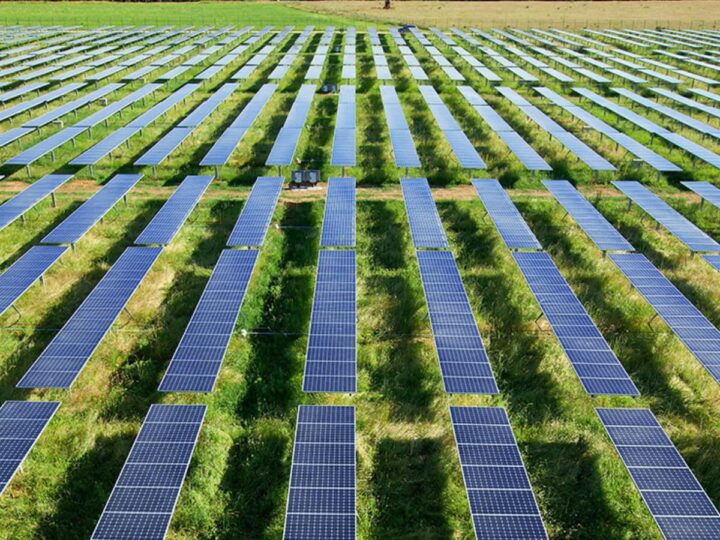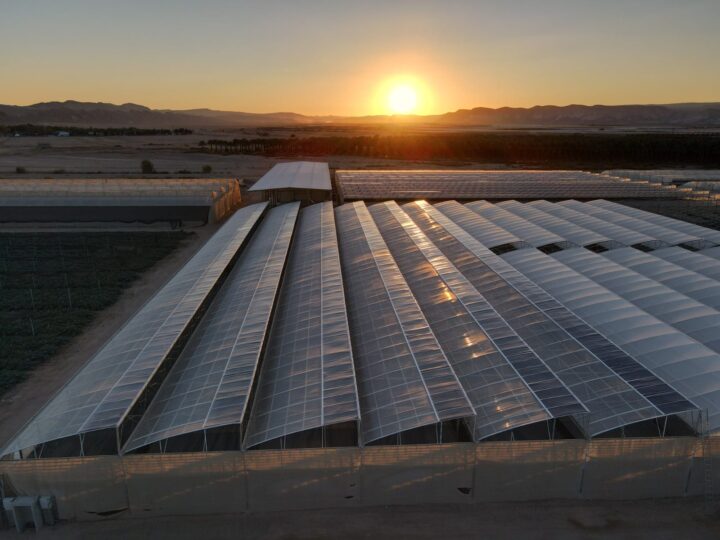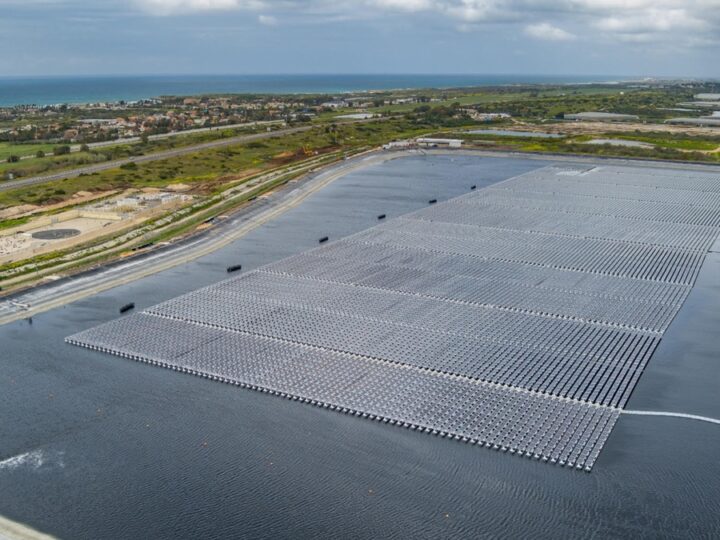Growing crops under solar panels – called “agrivoltaics” or “agri-photovoltaics” – is a promising solution for using the same plot of land to both feed the world’s growing population and provide sustainable energy.
“This increases land-use efficiency, as it lets solar farms and agriculture share ground, rather than making them compete against one another,” according to the World Economic Forum.
Agrivoltaic experiments in North America, Europe, Asia and Africa over the past decade indicate that putting PV panels over farms can reduce water consumption; protect crops from over-exposure to sun radiation; lessen the impact of hail, wind and rain; improve power generation in hot, dry places; and of course provide more income to farmers.
However, not all crops thrive under solar panels and success depends on variables including geography and climate.
In the small, sunny, technologically advanced state of Israel, the government is investing some $5 million in 120 agrivoltaic pilots over the next two years.
Even countries that are already experimenting with agrivoltaics are interested to see the results and apply lessons learned to their own projects.
Taking the lead
“As a country globally recognized for solar and agricultural innovation, it’s natural for Israel to take the lead in APV [agri-photovoltaics],” said David Zigdon, CEO of the MIGAL Galilee Research Institute of the Israeli Innovation, Science and Technology Ministry.
MIGAL is joining the Green Energy Association of Israel in leading the Israeli Climate Forum’s planned Israel APV Steering Committee.
Zigdon said studies indicate that agrivoltaics installed on just 1% of arable land could fill global electricity needs.
“We are excited about agrivoltaics’ potential to improve land use, scale the production of clean energy and reduce food shortages – especially given the growing challenges facing agriculture in so many regions.”
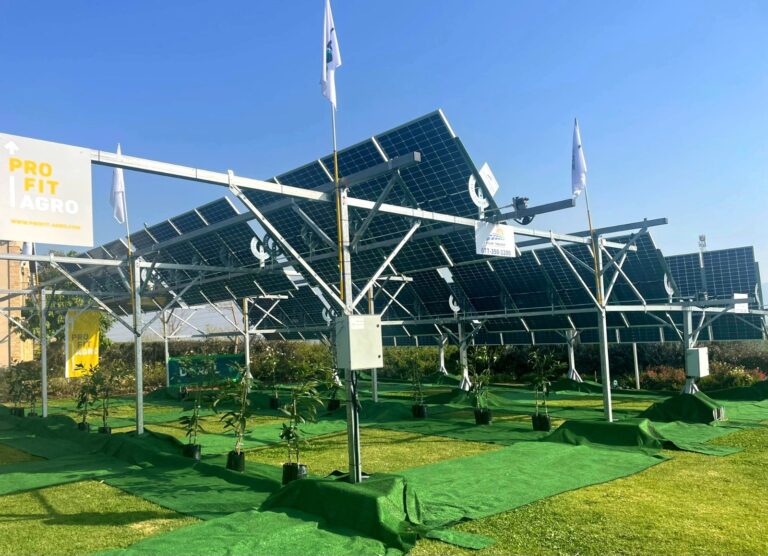
More than 600 scientists, farmers, entrepreneurs and officials from Israel, Japan, Germany, France and the United States attended the second annual SunnySide APV Summit hosted in Israel by MIGAL and Germany’s Fraunhofer Research Institute in March.
There, MIGAL launched the world’s first Agri-Photovoltaics Knowledge Center to collect and share research with farmers, energy developers and policymakers, says Ori Ben Herzel, VP of value creation for MIGAL.
“If we have information from Italy about growing apples, for example, it will be totally different in Israel so we need to learn it from the beginning,” Ben Herzel tells ISRAEL21c.
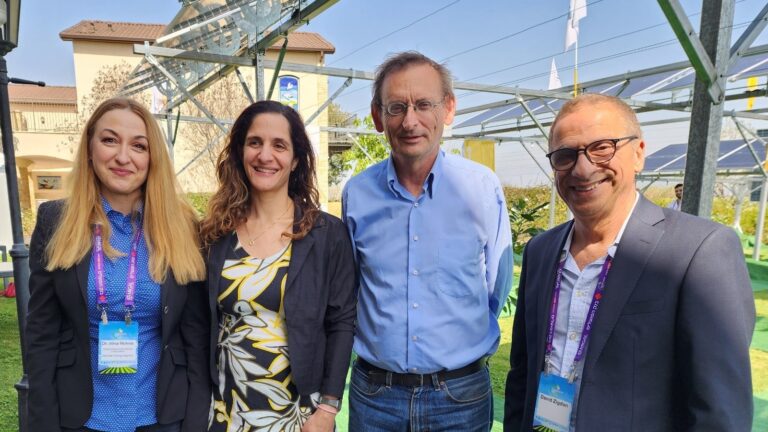
Israel’s ministries of energy, agriculture and environmental protection have made agrivoltaics a national priority, he says, with the strategic vision of finding the best conditions to create both energy and food.
MIGAL researchers are setting up more than 50 pilots, including one on a commercial farm, Ben Herzel says.
Tomatoes and potatoes
At Bar-Ilan University in Ramat Gan, Prof. Yigal Cohen and researcher Yariv Ben-Naim began an experimental agrivoltaic project two years ago using infrastructure from nearby company Doral Energy.
“We are focusing on tomatoes and potatoes, two open field crops,” Ben-Naim tells ISRAEL21c.
“We want to understand the biological aspect of what happens to the plants’ quality and yield when grown under different shading effects of the solar panels, which cover about a quarter of the field,” he says. “We are looking for the ideal distance of the crops from the panels.”
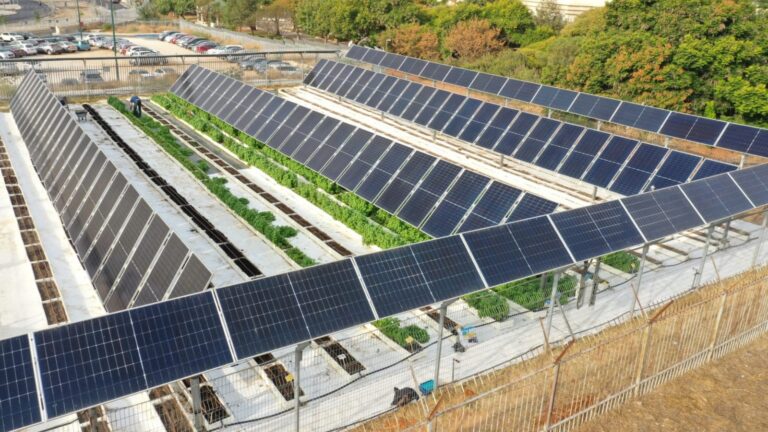
Ben-Naim says that about 20% of yield was lost among crops raised under the PV panels – some rows losing as much as 45% and others as little as 2%, depending on their proximity to the panels.
What’s more, the tomatoes under full shade are of lower quality, and the root systems of both the potatoes and the tomatoes are shorter and less developed.
“The plants beneath the panels grow higher because they are expending energy looking for sunlight,” says Ben-Naim, noting that an agrivoltaics research group in Germany had similar results.
Balancing gains and losses
The big question is whether the crop loss is offset by income from the energy produced, taking into account the costs of setting up and maintaining the solar infrastructure.
“From what I see, there is a relation between the coverage and the loss. If you cover 15% of the field you’ll probably lose 15%,” says Ben-Naim. “The main issue is the price you get for the yield.”
If 1,000 square meters of tomato plants normally yield 12 tons, and tomatoes sell for 400 shekels per ton, a 20% loss equals about 1,000 shekels. But during the three-month growing season, the energy generated by the panels could bring in 8,500 shekels for the farmer – minus loan payments and maintenance.
The calculus is changeable depending on the fluctuating market price of each crop and the value of the energy, as well as seasonal weather changes and other factors.
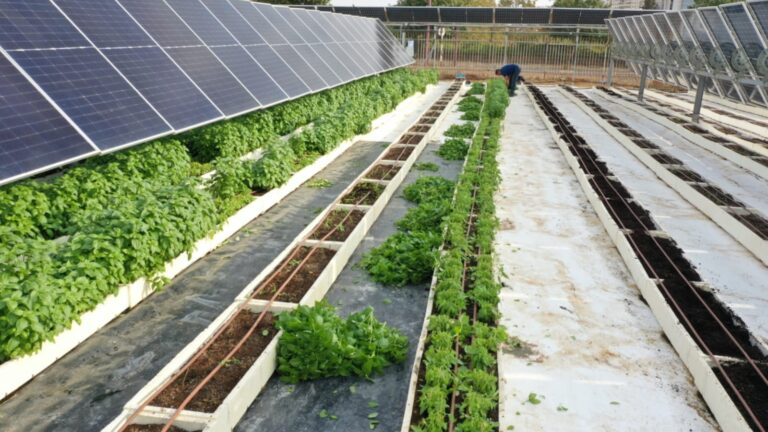
“It’s complicated,” says Ben-Naim. “In Israel, farmers never plant during summer months or in February to March. So, during those months they would not lose any crops and get only the benefits of the solar energy produced on the field.”
There is a lot of work ahead, he concludes, to determine the ideal balance.
Commercial agrivoltaic projects coming
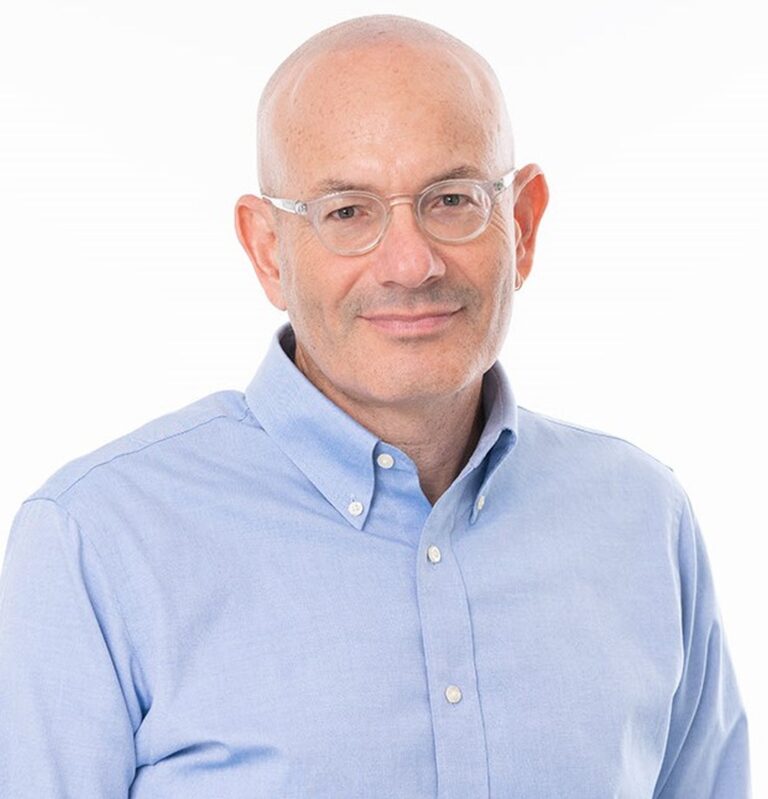
“The challenge is mainly the impact on the agriculture itself, to make sure the PV panels don’t negatively impact photosynthesis,” says Rani Lifshitz, CEO of Israeli renewable energy company Teralight.
Teralight and French company Sun’Agri will cooperatively establish two agrivoltaic pilot projects by the end of this year in Israel.
The projects will use Sun’Agri’s software solution for controlling the angle of the solar panels throughout the day to optimize photosynthesis and electricity production in real time. The panels, installed on moving trackers, also protect crops from extreme weather.
“This strategic partnership with Sun’Agri will enable Teralight to offer moshavim, kibbutzim and agricultural land owners all over Israel a significant value proposition,” says Lifshitz.
The results of such projects will shed light on whether agrivoltaics can live up to its bright potential.














